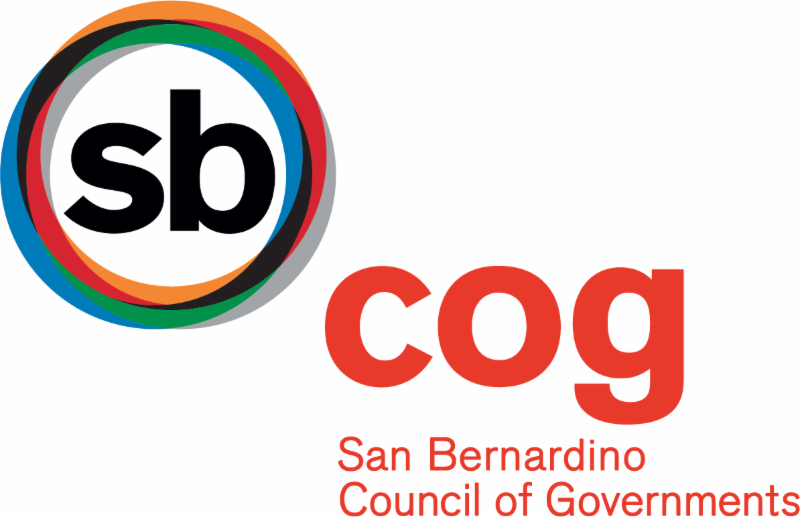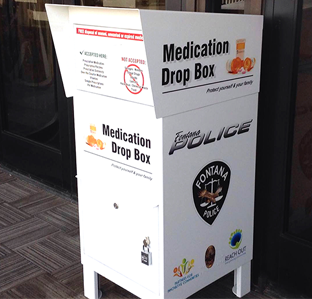|
San Bernardino Council of Governments
|
|
|
|
Quarter 2 - In This Issue:
|
|
|
|
|
 |
COG Work Plan

On Thursday, May 4, 2017, the COG Ad Hoc Committee conducted a workshop to determine a clear consensus on COG priorities and subsequent activities. A survey was distributed prior to the workshop, which sought input on COG priorities for the upcoming fiscal year. The results of the survey served as a basis of the discussions that took place during the workshop. This lead to a work plan for the upcoming 2017/2018 fiscal year that was approved by the Board of Directors on Wednesday, June 7, 2017. The complete work plan approved by the Board can be found under
Agenda Item 36.
The top five priorities identified in the work plan are:
- Coordinating with OIAA, local, and regional governments on ways to assist in the success of the Ontario International Airport.
- Work together with all cities with San Bernardino County to increase regional collaboration in economic development, encouraging inter-county coordination, and sharing of resources for smaller jurisdictions.
- Facilitate discussions and seek grants to fund studies and improvements for regional public safety communications, as well as act as the regional voice to educate policy makers and assist network communications between agencies.
- Development of a regional electronic vehicle charging network and apply for appropiate grants to funds implementation efforts.
- Coordinate the development, funding, and improvement of regional trails.
Funding for the COG was also discussed. With the recent loss of funds from the administration of the HERO program, a funding shortfall for COG activities now exists. The current reserve of funds can sustain the COG for at least two years, however, this is not sustainable in the long term. Staff will develop funding alternatives to present to the Board in the Fall and discuss at the Board retreat.
|
On May 10, 2017, The San Bernardino Council of Governments (SBCOG) was awarded $181,000 from the California Energy Commission (CEC) Zero-Emission Vehicle Regional Readiness and Planning Grant to develop a San Bernardino Countywide ZEV Readiness and Implementation Plan (Plan). The goal of the plan is to guide future implementation of zero-emission vehicle (ZEV) infrastructure in the region as funding sources become available. The plan will be developed, in part, with our member cities, and the assistance of an expert ZEV infrastructure planning consultant, hired through a Request for Proposal (RFP) process upon funding award. The ultimate goal of the Plan is to develop a list of potential "shovel-ready" projects with associated costs and other relevant guidance documents to take advantage of funding sources as they become available. SBCOG was one of only three agencies statewide awarded CEC planning grants for a total of $673,962.
|
|
San Sevaine Trail
|
SBCOG is proud to partner with the County of San Bernardino and the Cities of Fontana and Rancho Cucamonga to apply for grant funding through the Urban Greening Grant Program to develop a 2.5 mile segment of Class I bike lanes along the central segment of the San Sevaine Trail (SST). San Bernardino County proposes the San Sevaine Trail Project to develop 2.5-miles of Class I bike lanes along the central segment of the San Sevaine Trail (SST). The scope of work includes design and construction of a bicycle/pedestrian bridge over the Metrolink railway (located north of Whitram Avenue), expansion of bike lanes from Foothill Boulevard to Interstate 10, installation of pedestrian crossings with hawk beacons at four main intersections (Arrow Avenue, Whitram Avenue, Napa Street, San Bernardino Avenue), planting 20 native trees along the SST Channel for additional green spaces, and additional trail amenities that include trail signs and benches strategically placed along the trail for resident enjoyment. The project will establish a continuous north/south trail alignment and include design standards that will improve connectivity and increase bicycle ridership. For additional information,
click here.
|
Ontario International Airport

As part of the COG's goal of supporting the success of the Ontario International Airport (ONT), COG and SBCTA staff have held meetings with OIAA staff on supporting ONT throughout the County and on ways to improve access to the airport. This is the beginning of what will be a continuous effort to support this regional asset and economic engine.
|
SBCOG was a proud partner with SCAG and the cities of Fontana, Rancho Cucamonga, and Rialto on GoHuman campaign for the past fiscal year. Three GoHuman events, hosted by each city, took place over the course of the year that transformed city streets into safe and enjoyable places to engage in active transportation. Temporary bike lanes, additional cross walks, and a myriad of street demonstrations provided our communities with the opportunity to get together and have fun walking, biking, and skating while having fun and feeling safe. Collectively, over 14,500 residents attended the GoHuman events and the community agreed that these demonstrated elements made the streets safer and inviting to use.
|
|
Summer Meals

Summer Meals for kids are here! The program is FREE and does not require paperwork of any kind. During the summer months, no-cost meals are available to children and youth under the age of 18. In addition to delicious food, children and families can enjoy a variety of enrichment activities at each Summer Meals site.
SBCOG is happy to partner with the California Summer Meal Coalition and the San Bernardino County Superintendent of Schools to increase the number of sites throughout San Bernardino County. To find a nearby site, text FOOD or COMIDA to 877-877, call 2-1-1, or
click here.
|
Public Safety Communications

SBCOG is supporting and collaborating with its Public Safety Answering Point (PSAP) centers, emergency first responders, and member jurisdictions to roll out Next Generation 9-1-1. This initiative is aimed at updating the current 9-1-1 communication infrastructure to support wireless technology and more efficient mapping systems. The upgrade will include the use of text message, pictures, and video communication in addition to standard phone calls. The switch to this new system will also allow jurisdictions to interconnect with other systems and databases, providing first responders with as much information as possible that leads to faster response times. The first collaborative meeting took place on Wednesday, May 17, 2017, and consisted of representatives from both San Bernardino and Riverside County and their respective cities. To streamline this initiative, the sub-committee has been broken down into three work groups to focus on different efforts that will meet our goal. The work groups include:
- Technical/GIS advisory
- State Governance
- Funding
To learn more about Next Generation 9-1-1 and the benefits it serves to our communities, click here.
|
Prescription Drug Drop-box Pilot Program

Opioid abuse in our region has become a countywide epidemic. To assist cities in addressing this issue, SBCOG is partnering with San Bernardino County Department of Behavioral Health on a prescription drug drop box pilot program for the boards consideration. The goal is to create and place as many secured prescription drug collection sites throughout San Bernardino County, as well as provide our communities with educational materials on the proper disposal of unused, unwanted, and expired medications. Improper disposal of medications, such as flushing down the toilet or throwing away in the trash, can lead to contamination of our water systems or medication ending up in the wrong hands. Although the proposed pilot program is optional for cities to participate in, the opioid epidemic remains a regional issue and will require a collective effort among cities to address. This is an effort to develop a common tool that our members can use in their community without duplicating efforts.
|
SBCOG - WRCOG Joint Workshop to Focus on Healthy Communities
SBCOG and WRCOG are planning a Healthy Communities workshop in the fall. Goals of the workshop include encouragement of the introduction of healthy communities policies and programs for use by cities, recognition of healthy communities staff members from our member jurisdictions, and provide information to policy-makers on healthy community tool-kits and training sessions to be made available to our cities. The workshop will be held in cooperation with the departments of public health from both counties.
|
|
STAY CONNECTED


|
|
|
|
|